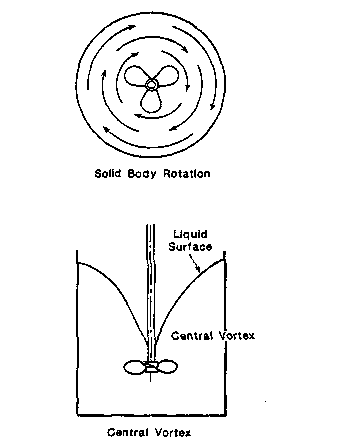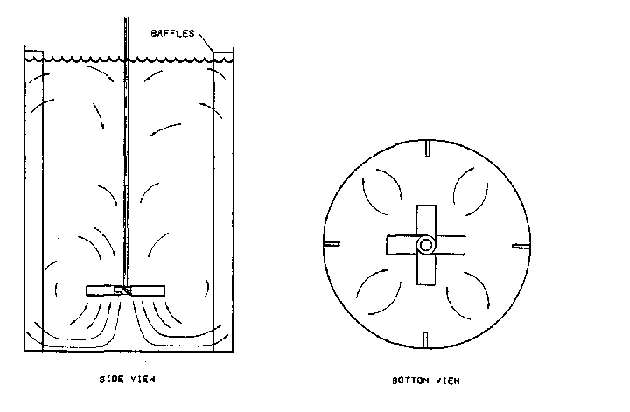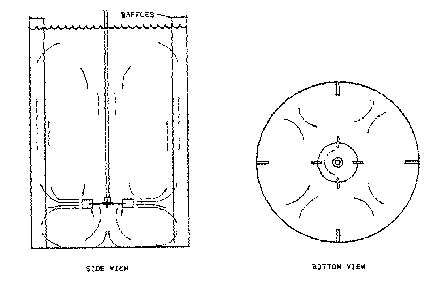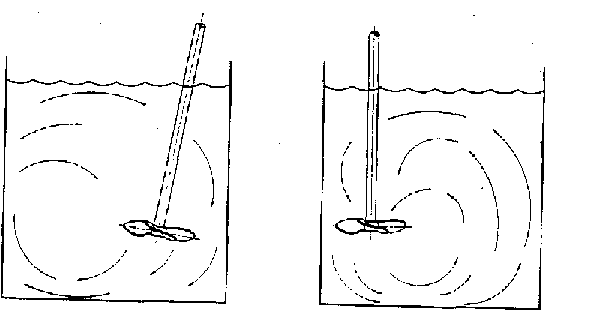
Figure 1: (a) Solid body rotation
The central surface vortex
While mixing liquids, it is necessary to avoid solid body rotation and a large central surface vortex. When solid body rotation occurs, the fluid rotates as if it were a single solid mass and results in no appreciable amount of mixing. A central surface vortex results from the centrifugal force of the fluid being thrown outward by the impeller. If the vortex reaches the impeller air entrainment may result.

These undesirable situations can be avoided by putting baffles on the tank walls or by placing the impeller in an angular off-center position. Baffles are vertical plates (typically about 10% of the tank diameter) that stick out radially from the tank wall and cause an increased amount of top to bottom circulation. For situations where a solid is suspended in a liquid, a gap may be left between the baffle and the wall to prevent any solid particles from being trapped. The following diagrams show the flow patterns for axial flow impellers with baffles, radial flow impellers with baffles, and for an angular impeller in an off-center position


Figure 3: Flow pattern for a radial flow turbine with tank baffles

Figure 4: Flow pattern for propellers in an angular
and off centered position
 To the Mixing in Chemical Reactors Main Page
To the Mixing in Chemical Reactors Main Page